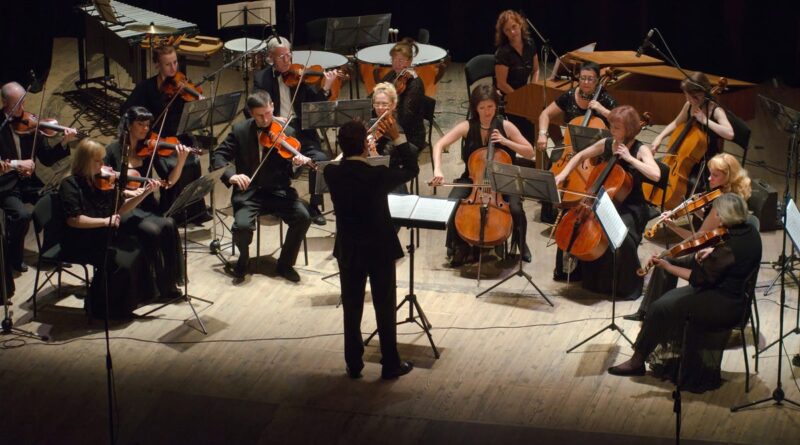Why Are There So Few Black Orchestra Musicians?

With Black musicians dominating the airwaves across genres, crooning to sell you auto insurance during commercial breaks, and even headlining Super Bowl halftime shows, (here’s looking at you, RiRi), it’s more than obvious that there is no shortage of Black musical talent in this country. And for that reason you gotta wonder, where the hell are all of the Black musicians in American orchestras? Well, at least that’s the question currently being posed by NPR, and dammit, we want to know too.
According to a diversity study published back in 2014 by The League of American Orchestras, an organization that represents both amateur and professional symphony orchestras across the country, only 1.4% of orchestra musicians are Black. We know what you’re thinking. How is this even possible when Prince played at least 25 instruments by himself?! Exactly. So why does it appear so hard to find Black musicians to fill orchestra seats, and has there been any increase in this grim figure from eight years back? Jennifer Arnold, a co-founder of the Black Orchestral Network says it’s hard to tell.
“There’s a real need to actually be transparent about what’s happening in the industry, in terms of Black people,” Arnold told NPR. “We do not know how many Black people are in orchestras. And I say that as a representative of Black Orchestral Network. One of our calls is, let’s start collecting data. Let’s find out, have we done better than the 1.4% number that is going out there? That 1.4% is kind of based on well, “I see a Black person on that stage in that orchestra.” That’s not data.”
In the experience of Ann Hobson Pilot, a Black female harpist who became the first Black musician included in the Boston Symphony Orchestra in 1969, being the one and only feels incredibly isolating.
“When I looked around the orchestra, I didn’t see anyone in there that looked like me,” she said. “And it was another 20 years before another Black player was hired, which is Owen Young, the wonderful cellist. And when I left 20 years later, Owen Young became the only black player in the BSO.” And still is.
G/O Media may get a commission

Releases November 30
Borrowing the display from the much-beloved Paperwhite, this screen provides a glare-free experience both indoors and outdoors so you can read by the pool or on the beach on a sunny day. New to this model is the inclusion of a pen. Take notes directly on the pages as you might in a traditional book, but the notes are automatically organized by title in a single place–letting you review and export them with ease.
During the great Zoom boom, born at the height of the pandemic, the Black Orchestral Network was founded. Clarinet player Alex Liang of the Phoenix Symphony Orchestra, and a co-founder of the BON, says that the goal was to become “an advocacy group, a group to speak to the experience of what it is to orchestra — the verb — as a Black person and how to support that in all of the places that it’s happening, not just professional ranks.”
One of the organization’s first action items was penning an open letter titled, “Dear American Orchestras,” which would detail the experiences of Black orchestra musicians, and be signed by 60 key players.
“We took inspiration from what we’d seen from the theater world and the dance world,” said Laing. “We wanted to articulate a point of view and speak to our experience and then also articulate a vision for the future.”
While the industry has implemented certain practices to curtail race biases such as “blind” auditions, where musicians play behind screens, Arnold says that efforts only go so far because the musicians selected during the audition process are of course determined by who is invited to audition in the first place.
“A lot of orchestras aren’t transparent about the fact that they don’t have fully blind auditions,” she said. In other words, plenty of those who audition are able to bypass the screen.
And auditioning is just one part of the everyday musician to orchestra musician pipeline. Shea Scruggs, an administrator at the Curtis Institute of Music tells NPR that there is no shortage of openings that could be filled by Black instrumentalists. He also wants to emphasize the fact that this is not a problem to solely be placed upon the shoulders of youth music programs, or conservatories.
“To say we need youth music programs, or it’s happening at the conservatory level; basically, to frame challenges around diversity in a way that absolves orchestras from being part of the problem” is an issue, he said.
There may be increases in the number of fellowships and DEI efforts made by individual institutions and organizations, but there is much left to be done. Gail Samuel, president and CEO of the Boston Symphony Orchestra affirms the fact that real change is necessary for the survival of American orchestras.
“We need to commit ourselves and our organizations to changing the systems, and the structures, and the policies that have excluded Black musicians for far too long.”

